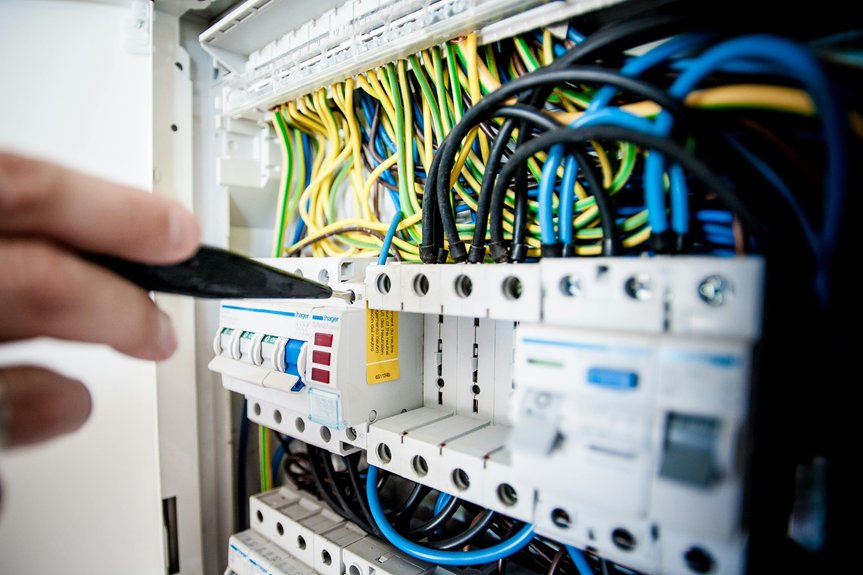Underfloor insulation placed beneath floorboards is essential for conserving energy and reducing heat loss, which can be significant in uninsulated floors. This leads to lower heating bills and a more comfortable living environment.
Various materials are available for insulation, including rigid foam boards and spray foam. Natural options, such as wool and hemp, are also popular choices, particularly for those seeking eco-friendly solutions. The selection of insulation material often depends on the specific climate and individual needs of the home.
Proper installation is crucial to achieving optimal performance. This involves sealing any gaps to prevent draughts, securing the insulation effectively, and ensuring that there are no blockages that could hinder airflow.
By understanding and implementing these techniques, homeowners can significantly enhance the efficiency of their underfloor insulation, leading to improved warmth and comfort in their property.
Benefits and Significance of Underfloor Insulation
Underfloor insulation offers a multitude of advantages, making it a highly beneficial enhancement for any home. One of the primary benefits is its ability to conserve energy by minimising heat loss through the floors. This not only helps in reducing heating and cooling expenses but also contributes to a more manageable budget. Research shows that up to 20% of heat loss can occur through uninsulated floors.
In the UK, households that invest in underfloor insulation often experience significant reductions in energy costs. By decreasing reliance on heating systems, especially during the colder months, homeowners can enjoy a more efficient and cost-effective living environment. Over time, the savings accrued can make this investment worthwhile, effectively paying for itself.
Beyond financial savings, underfloor insulation enhances comfort within the home. It helps to ensure that floors remain warm and draught-free, which can significantly improve the overall living experience.
Additionally, insulated homes tend to maintain a more consistent temperature throughout, fostering a sense of comfort and belonging. This relatively straightforward upgrade not only makes homes more energy-efficient but also creates a cozier atmosphere, making them inviting spaces to enjoy.
Types and Materials Used for Underfloor Insulation
Various materials are utilised for underfloor insulation, each offering distinct features and benefits.
Polyiso rigid board insulation provides exceptionally high thermal resistance and is robust enough to withstand heavy loads. Additionally, it is environmentally friendly, being produced from recycled materials and utilising low global warming potential blowing agents.
Spray foam insulation expands to fill gaps, creating an airtight seal that significantly reduces heat loss and moisture ingress. This type of insulation is particularly effective for irregular surfaces.
Rigid foam boards such as expanded polystyrene (EPS) and extruded polystyrene (XPS) offer good structural support and moisture resistance, making them suitable for a variety of applications.
Mineral wool and fibreglass batts present lightweight options that not only insulate but also provide soundproofing benefits. Reflective insulation, designed to reflect radiant heat, is ideal for warmer climates. For those seeking eco-conscious alternatives, natural materials like wool or hemp are excellent choices.
| Material | Key Features |
|---|---|
| Polyiso Rigid Board | High thermal resistance, durable, environmentally friendly |
| Spray Foam | Airtight, fills gaps, excellent for irregular surfaces |
| Rigid Foam Boards | Moisture-resistant, provides structural support |
Tips for Proper Installation and Climate Considerations
Proper installation of underfloor insulation is crucial and heavily influenced by the specific climate conditions in the UK.
To begin, it’s essential to inspect for moisture, rot, pests, and any structural issues to prevent future complications. Clearing debris and ensuring that ventilation paths, such as airbricks, are unobstructed helps maintain airflow and minimise condensation.
It is vital to avoid blocking vents or existing wiring, and to plan for any necessary penetrations to prevent drafts. During installation, the insulation must fit snugly between the joists and should be supported with mesh or battens, taking care not to compress it.
Applying vapour barriers on the warm side of the insulation is particularly important in humid climates, as it helps control humidity levels. Proper sealing of gaps and penetrations is essential to prevent heat escape. Creating an airtight seal around the insulation creates an airtight seal, which is key to maximising efficiency.
Adjusting the thickness or quality of insulation materials according to the local climate conditions ensures optimal thermal performance and comfort. Adequate installation not only reduces heat loss but also enhances energy savings and overall indoor comfort.
Conclusion
Underfloor insulation is essential for enhancing energy efficiency in homes, ensuring comfort, and lowering heating expenses. Selecting the appropriate type of insulation and installing it correctly can yield significant benefits, particularly in the varied climates across the UK. Familiarising oneself with the different materials and techniques available empowers homeowners to make educated choices.
Regular maintenance and seasonal adjustments can help sustain the effectiveness of underfloor insulation. When applied properly, this insulation provides an effective method for maintaining consistent indoor temperatures, which in turn boosts overall property value.
Investing in underfloor insulation not only contributes to a more comfortable living environment but also plays a crucial role in reducing energy consumption, making it an important consideration for any homeowner looking to improve their home’s performance.

